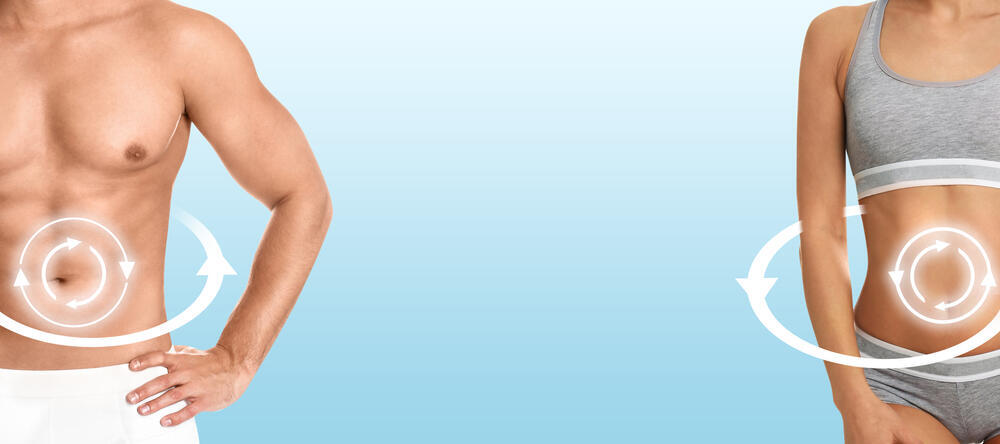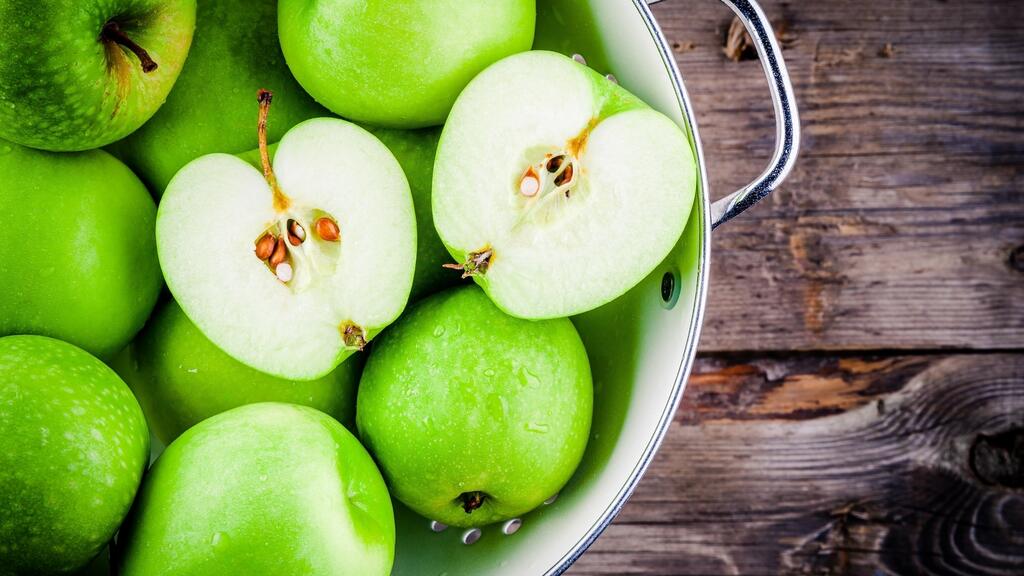There are so many excuses for not losing weight, we blame it on the body's metabolic mechanism. It's not us, it's the metabolism that hinders us in our diet. It's the one to blame for everything, isn't it? Dr. William Li, an American physician and researcher specializing in studying the immune system's activity in the body and its influence by food, debunks several of the most common myths in his new book and proves that the situation is completely different.
Read more:
Following the great success of his first book, "Eat to Beat Disease," which focused on the impact of food on our resilience against diseases, he is now releasing a new and intriguing book called "Eat to Beat Your Diet." In this book, he goes one step further and demonstrates how the right foods can also accelerate metabolism and contribute to our well-being.
"In the wake of the previous book, I received thousands of emails from readers who told me they felt more power and control over their health," writes Dr. Li in the introduction to his new book. "But to my surprise, many also said they managed to lose weight in ways they had never experienced before. Wait a moment, I thought to myself, they didn't eat less, so how did that happen? I delved deep into the science of body fat, examined the connections between metabolism, fat, and food, and what I discovered was surprising: most of the information on the subject that seems like scientific facts to us is incorrect. I also understood that many food components that enhance our body's defense systems - bioactive ingredients - encourage cellular actions that improve metabolism and combat body fat. I want to present this information, supported by research from recent years, now."
This is not a regular diet book, although it recommends a specific diet that combines Mediterranean and Asian menus. Its main goal is to help us better understand how our body systems can work more efficiently and how certain foods can help us improve our health and, along the way, lose some weight.
From the abundance of information in the book, we chose to address four myths and draw new insights from them regarding the connection between metabolism, fat, and our food.
Breakthrough research conducted two years ago by Prof. Herman Pontzer, a professor of evolutionary anthropology at Duke University in the United States, together with 81 scientists representing 47 institutions from ten countries, examined 6,421 individuals ranging in age from eight days to 95 years. The researchers examined the daily metabolism of the study participants, regardless of age and geographical location. The findings of the study, published in the journal Science, were surprising: everyone had four distinct metabolic periods throughout their lives.
Period 1 - From birth to one year old - Calorie burning is at its peak and increases by 50% compared to the metabolism of an adult.
Period 2 - From one year old to 20 - Metabolism slows down at a rate of 3% per year.
Period 3 - From 20 to 60 - Surprisingly, the metabolism remains unchanged (even during pregnancy or menopause).
Period 4 - After the age of 60 - Metabolism starts to decline, but at a low rate of 0.7% per year.
Another surprising finding: After neutralizing data on body dimensions and muscle mass, researchers found that there are no differences between the metabolism of men and women.
Implication: The findings are still being processed and can lead to changes in medical practices. However, it is important to remember that the basic mechanism of metabolism works in our favor, especially between the ages of 20 and 60. Therefore, making the right choice of quality food is crucial during these ages.
Recent studies have found that even a small weight loss has significant health benefits:
Lowering blood pressure: Researchers from Wageningen University in the Netherlands analyzed 25 clinical studies involving 4,874 participants. It was found that for every 2-pound (900-gram) weight loss, there was a 2.8% decrease in blood pressure.
Reducing the risk of cancer: A study conducted by the American Cancer Society examined weight changes over a period of ten years among over 180,000 women from the United States, Australia, and Asia. At the start of the study, the women were in their 50s, not using hormones, and had excess weight, which remained stable or decreased during the study period. The results showed that women who lost 5 pounds (approximately 2.3 kilograms) or more and maintained the achievement experienced an 18% reduction in the risk of developing breast cancer.
Another study conducted by Indiana University, which included over 36,000 women aged 50 to 72, all with excess weight, found that women who lost 10 pounds (about 4.5 kilograms) reduced their risk of cervical cancer by 39%. Additionally, studies also show that yo-yo diets - a pattern of weight loss and regain - are not necessarily bad. Weight loss itself is positive, and even if you regain the lost weight, it doesn't harm your metabolism as long as you avoid unhealthy eating habits between cycles.
Implication: Extreme diets are unnecessary; it is better to choose moderate approaches to sustainable dietary changes that can lead to gradual weight loss, thus here are some myths about weight loss:
Body fat is always harmful, on the contrary, some fat kinds can actually help metabolism
Most of the fat in the body is subcutaneous (can be felt when pinched in the full areas), but about 10% of the fat is not visible to the naked eye. It is deeply buried in the body's cavities and releases hormones that affect all body systems. There is even an organ called the omentum, located in the abdominal cavity, entirely made of fat, and its weight varies from person to person, ranging from 300 grams to one and a half kilograms. This organ processes energy for metabolism, regulates appetite, controls inflammation, and encourages the body's immune systems to function properly.
Fat is also a heat generator in the body. It's a unique type of fat called "brown fat" (the fat that stands out in infants) that can burn excess amounts of other fats in a process called thermogenesis. This process can be influenced by cold temperatures and fasting, but also by certain types of foods with bioactive substances (such as spicy chili peppers) that stimulate it. By the way, as Dr. Li explained in his previous book, thermogenesis also has a positive effect on the body's immune systems.
Meaning: It is important to navigate the topic of body fat. Excess white fat can lead to metabolic syndrome, a condition in which the body's sensitivity to insulin decreases and may contribute to diabetes. However, utilizing the body's good fat stores can boost metabolism and improve health.
Reducing food intake is the way to lose weight, but in fact, it is advisable to consume foods that promote metabolism
Dr. Li identified 150 foods that contain bioactive ingredients and can assist with weight loss. According to him, "Certain foods inhibit the expansion of fat cells, others cause 'bad' fat cells to transform into 'good' ones, some prevent fat cells from producing dangerous fat, and there are also those that encourage the production of brown fat, which burns bad fat. In other words, they fight fat with fat."
Among the bio-active foods are:
Carvacrol: Found in herbs such as oregano, thyme, and marjoram. Studies have shown that it reduces the conversion of stem cells into white fat cells by 27%.
Quercetin: Found in red onions, red apples, tomatoes, shallots, and cherries. It contributes to reducing bad fat, decreases inflammation, and improves insulin sensitivity.
Luteolin: Found in green peppers, celery, parsley, red lettuce, artichoke, and cauliflower. It contributes to the conversion of white fat into brown fat, reduces inflammation and fat, and improves insulin sensitivity.
Chlorogenic acid: Found in carrots, artichokes, apples, kiwi, and coffee. Research has found that it affects subcutaneous fat, among other things, by activating thermogenesis in brown fat cells to burn excess fat and promote metabolism.
Ursolic acid: Found in berries, lavender, thyme, and rosemary. It increases the amount of brown fat cells and improves metabolic efficiency.
Spermidine: Found primarily in the white pith of oranges and lemons and also in the mint plant. It enhances cholesterol metabolism and slows down the formation of new fat cells.
Omega-3 fatty acids: Found primarily in seafood. They convert white fat into brown fat and stimulate the activity of brown fat cells in the thermogenesis process.
Principles of nutrition to boost metabolism, include more of the following foods in your menu:
Bread wholemeal, brown or wild rice, quinoa - instead of refined grains.
Frozen fruits and vegetables - instead of processed frozen foods.
Olive oil, and tomato sauce - instead of dressings and processed foods.
Steamed or roasted vegetables - instead of deep-fried vegetables.
Coconut milk, almonds, soy or oat milk, Greek yogurt - instead of regular dairy products.
Fish, small shellfish, tofu - instead of processed meat.
Shellfish, mushrooms, chicken, seafood - instead of red meat, fried chicken, lamb, pork.
Dark chocolate 80%, honey, homemade granola - instead of foods with added sugar or artificial sweeteners.
Sugar-free or natural sweeteners coffee, fruit smoothies, soy milk, tea, water - instead of alcohol, sugary beverages, fruit juices with added sugar, and milkshakes.
Include foods from the Mediterranean and Asian menus - two dietary methods known for their health benefits and containing foods with many bioactive components.
- Incorporate intermittent fasting into your diet, which encourages metabolic exchange in the body. You can start with a moderate version of 12 hours of fasting. It is advisable to wait at least an hour after waking up before having breakfast and to stop eating at least two to three hours before bedtime.
- Always prefer fresh food and avoid processed or fried foods.
- Eat intentionally and choose your food wisely. Every meal is significant. Cut back on foods that negatively impact your health and eat with the goal of improving your well-being.
- Skip a meal or two each week. If you can't find something healthy to eat, skip the meal.
- Eat in moderation because overeating puts pressure on your metabolism. Listen to your body. As the Japanese saying goes, "Stop when you are 80% full."
- No meal is complete without hydration: water, tea, or coffee. Drink before, during, or after the meal.
- Eat with company because companionship reduces stress and slows down eating.
- Enjoy your food: live to eat, don't eat to live. Allow yourself to enjoy the food, nourish your brain's hedonistic center, and share the pleasure with others.







